ecosystem-guides.com
....exploring the planet's ecosystems
NEOTROPICAL
Tropical Freshwater
(Flooded Grassland & Savanna, and Rivers)
The freshwater floodplains across tropical South America offer great wildlife viewing. They are also safer than their ecological counterparts in Africa and Australia, as their crocodilians seem less inclined to eat you!
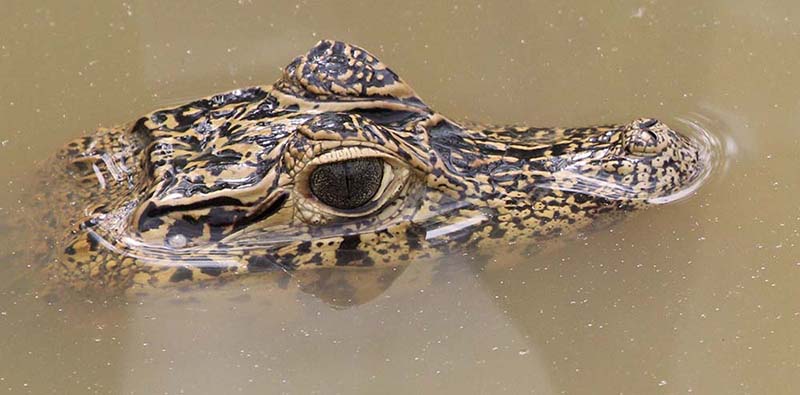
The freshwater wetlands of the tropical Americas are found intermittently across the broad upper half of the continent. Many of these are located as patches within the Amazon and the Orinoco regions. During the wet seasons these areas expand, but during the dry season they areas contract and some of the smaller wetlands may disappear altogether. The largest expanse of tropical freshwater wetland in South America is also the largest on the planet - the Pantanal.
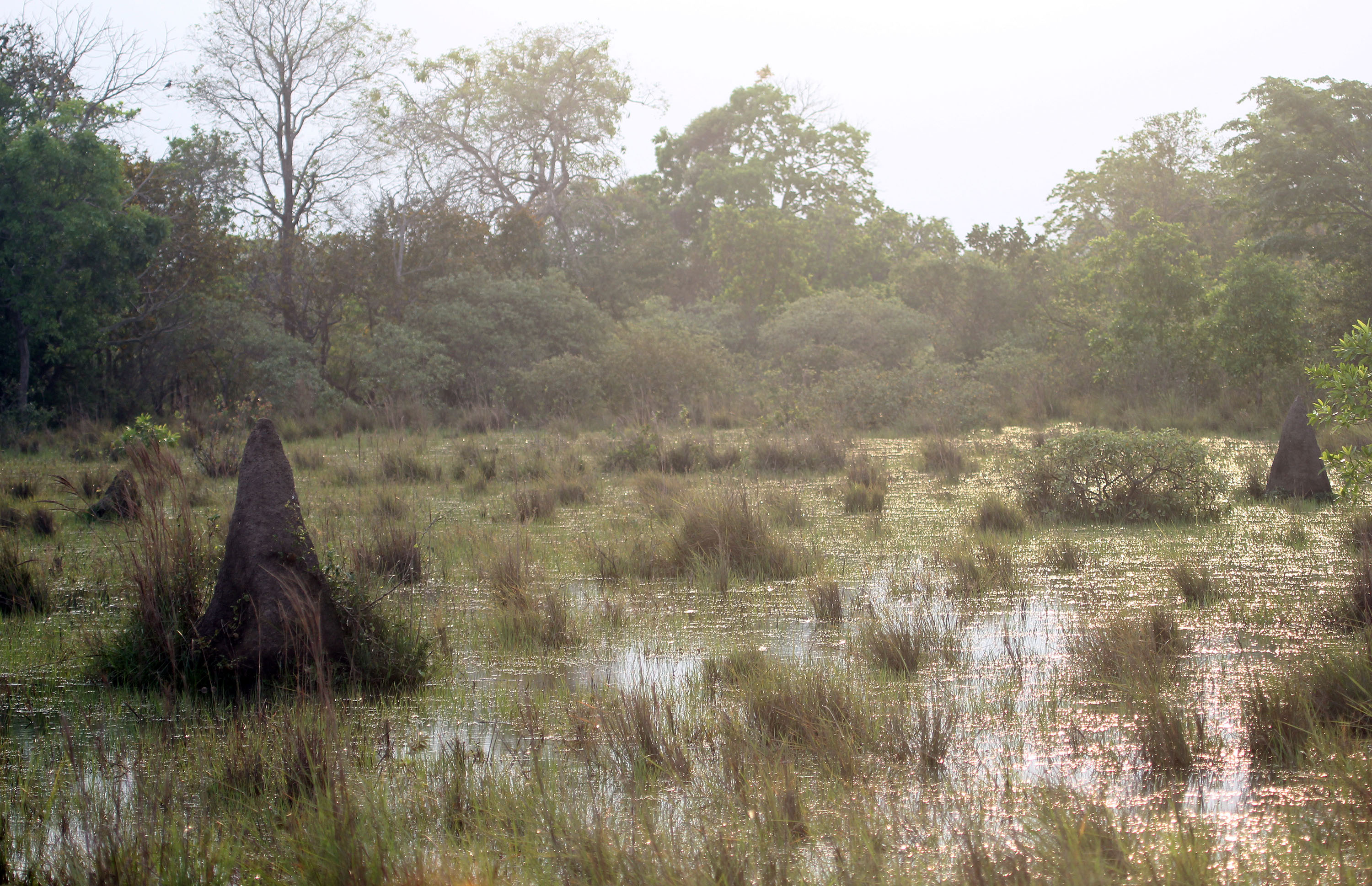
There is usually overlap of animal species in these wetlands coming in from the surrounding habitats, which can include rainforest or more open woodlands. While overall species diversity may be lower in the wetlands than in surrounding habitats, wildlife here can be easier to spot. In wetlands near rainforest, the more open nature of the wetland environment compared to the closed habitats of rainforest makes it better to see. In wetlands near woodlands and savanna, wildlife is attracted to the freshwater, especially at the end of the dry season.
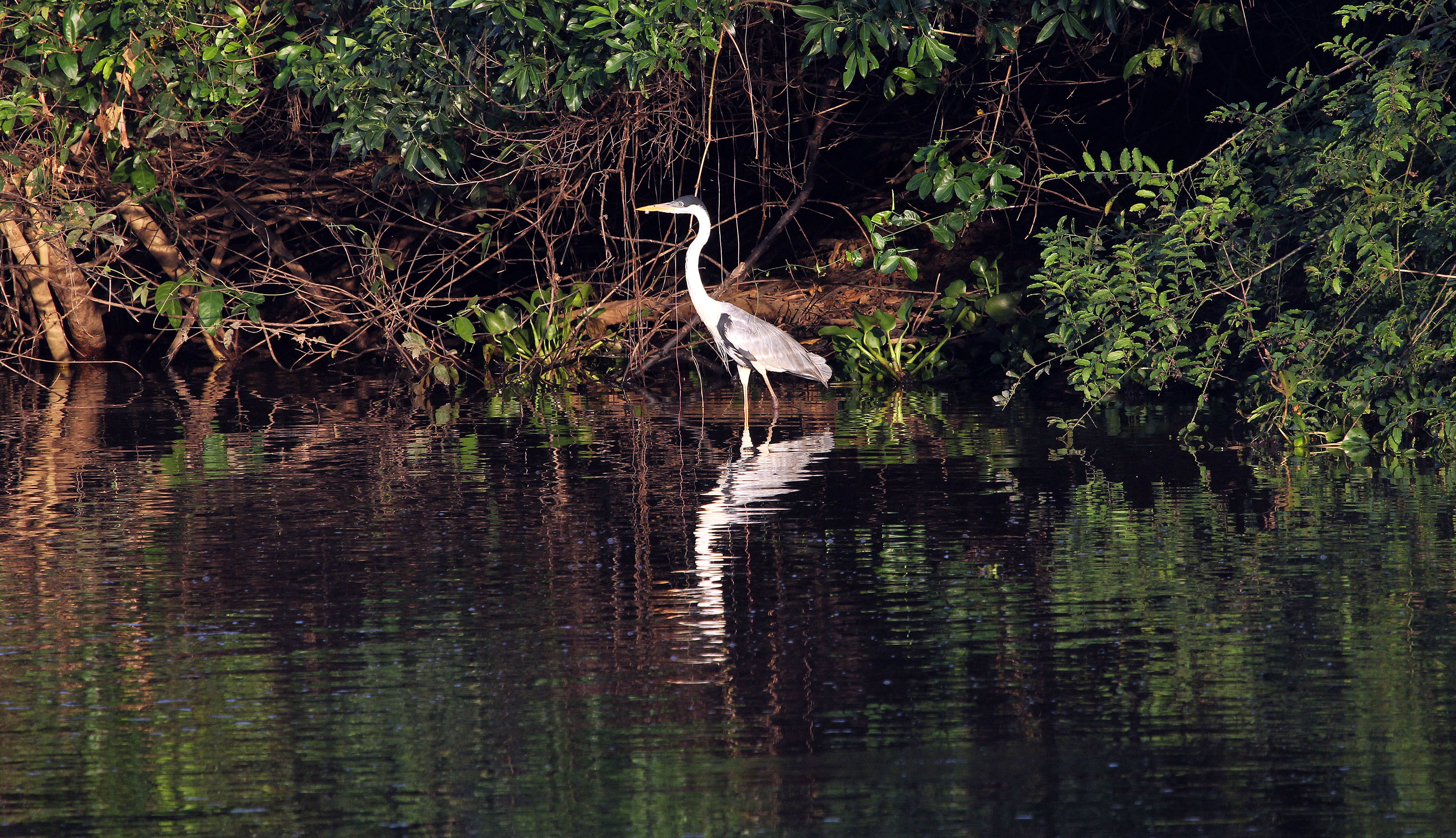
The Neotropical freshwater systems have by far the most species diverse freshwater fish list on the planet. In fact, with over 6000 species, the freshwater fish of South America are considered to be the most diverse group of continental (not marine) vertebrate animals on the planet. However, they can be hard to see, with the water often being dark and murky. There are exceptions, such as the clearer water areas of Bonito in Brazil. Most fish you see will be caught, or in markets. The most obvious fish are usually the Cichlids, but the most infamous group of Neotropical freshwater fish are no doubt the Piranha.
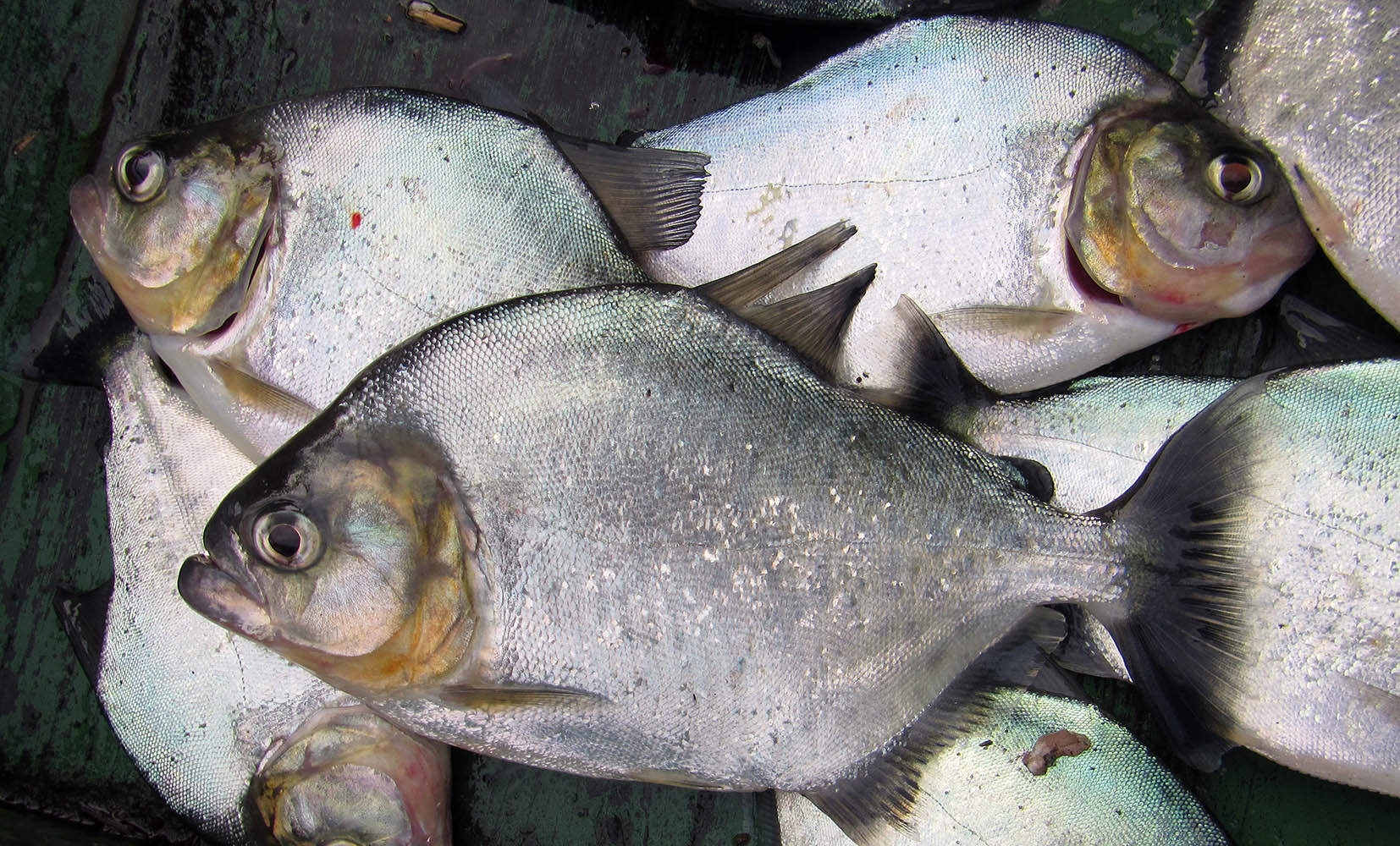
There are somewhere between 30 and 60 species of Piranha over several different genera. They are best known for inhabiting the Amazon river systems, but they are also found in other waterways across tropical South America. Many species of piranha are vegetarian, eating fruits that plop into the water. Some do attack and eat other animals. They can be attracted by blood or erratic movement in the water, and can eat the flesh off a dead animal in the water with their small sharp teeth and powerful bites. The most threatening species to humans are the 'Black Piranha' and especially the 'Red-bellied Piranha'. However, it is thought the many of the humans that have been found eaten by these fish, were people that had drowned already. While bites to fingers and body parts occur, fatal attacks by school of piranha are hard to prove. Piranha are more commonly eaten by people rather than the other way around. They are sometimes easy to catch, with just a hook and no bait, as I have experienced in Brazil. They are the only fish I have eaten and enjoyed (it helps that they were freshly cooked).
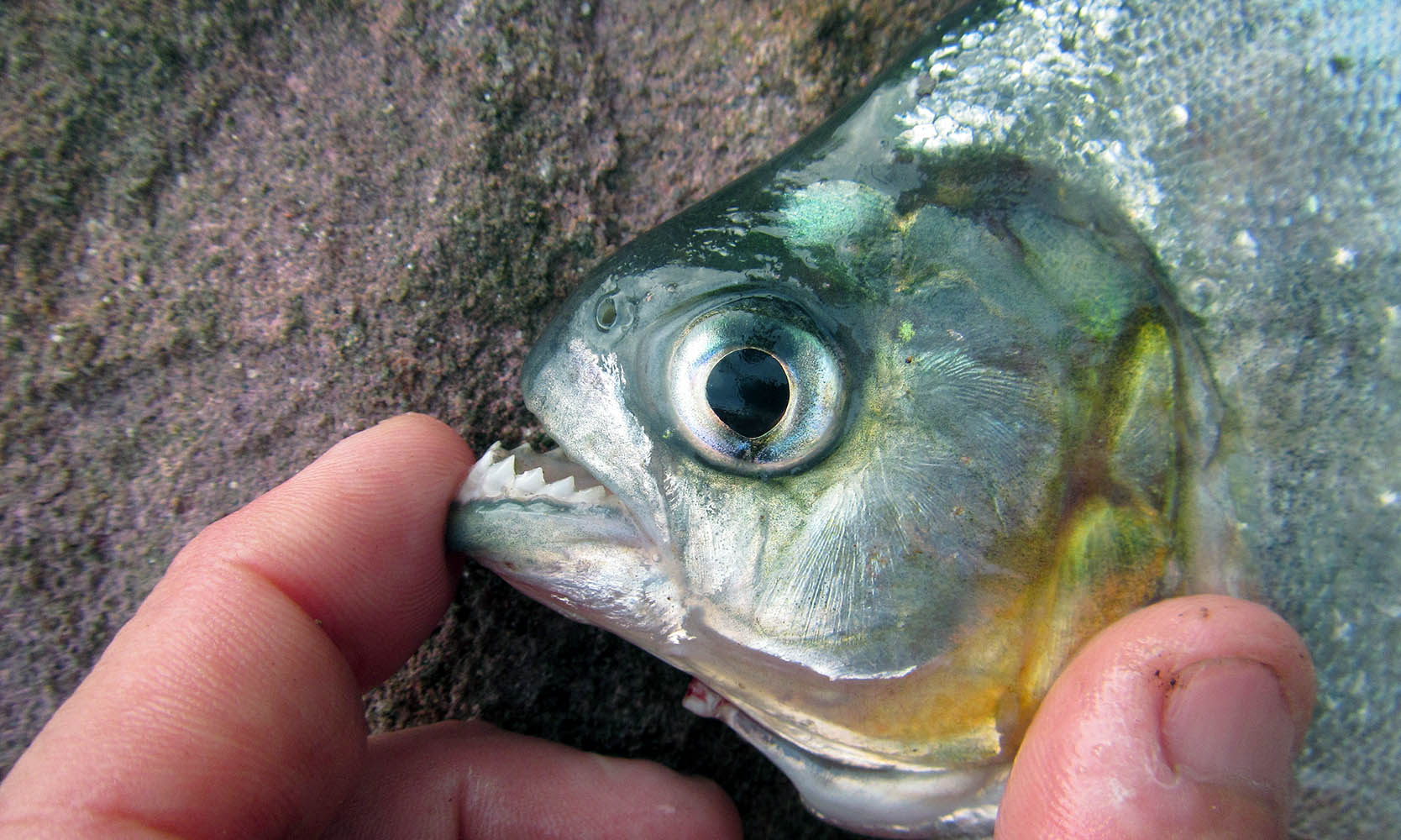 The authors finger next to the sharp teeth of a piranha! The fish was dead.
The authors finger next to the sharp teeth of a piranha! The fish was dead.Another type of infamous toothsome animal group are the crocodilians. This group are often one of the main predators in tropical freshwater systems around the world. They have been around for a while, and are very successful, and it is no different in the Neotropical freshwater wetlands, where there are several species of Caiman. The largest, and the apex predator of Neotropical freshwater ecosystems, is Melanosuchus niger, 'Black Caiman', which can grow to at least 5 metres.
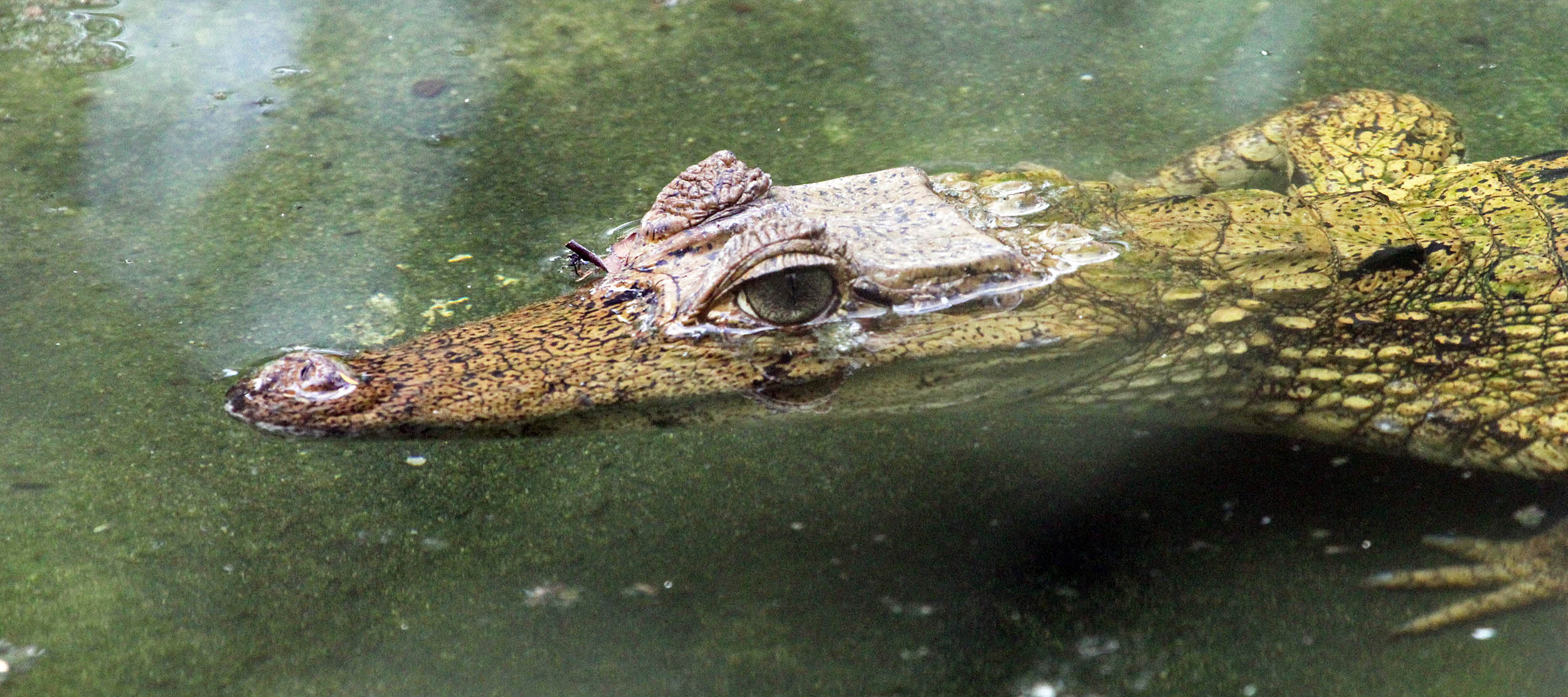
Another large and infamous reptile of the Neotropical freshwater systems is the Anaconda. These boas are found around freshwater habitats in the tropical Americas. They include some of the biggest snakes in the world: the largest of the anacondas is Eunectes murinus, 'Green Anaconda'. This is the heaviest snake in the world, and the second longest (after the reticulated python of tropical Asia). They have also been recorded to live the longest, a captive specimen dying just before it's 38th birthday.
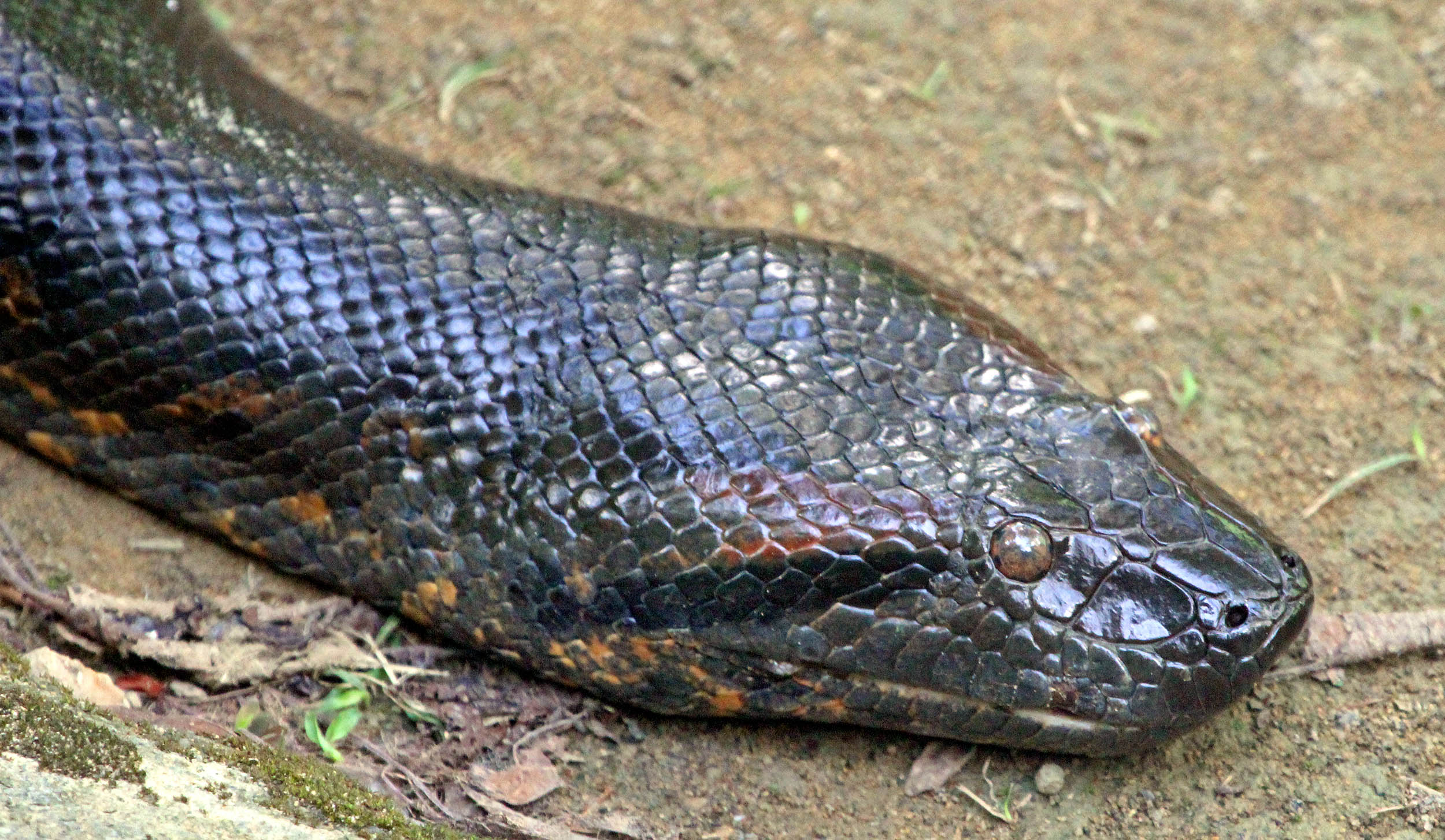
The birds of the Neotropical freshwater wetlands are very diverse and include many of the groups you would expect, such as Herons and Kingfishers. Quite a few species, such as the Snowy Egret, Ringed & Amazon Kingfisher, Neotropical Cormorant and Anhinga, are widespread and found in other habitats across the Americas.
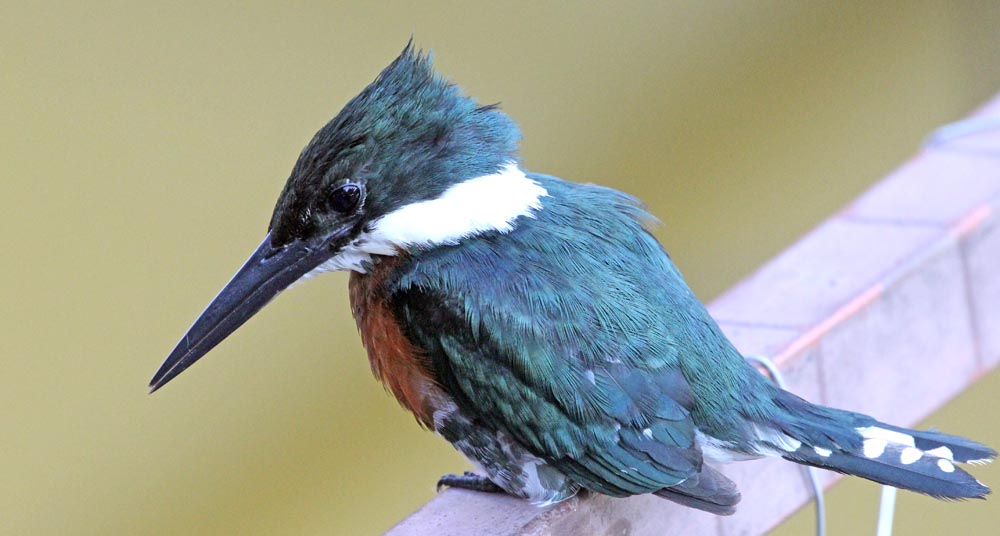 Amazon Kingfisher, (Hotel Pantanal Mato Grosso, the Pantanal, Brazil)
Amazon Kingfisher, (Hotel Pantanal Mato Grosso, the Pantanal, Brazil)However, there are also many regional endemics, as well as some unique species that are endemic to this habitat.
The family Opisthocomidae contains only one famous and well known species, and it lives around Neotropical freshwater; the 'Hoatzin'. Opisthocomus hoazin. It is a large bird with a wacky crest. It clambers about in waterside trees clumsily, often making grunting and croaking sounds. Unusually for a bird, it often eats leaves. It is found in the more forested swampy habitats across northern South America, however it's distrubution does not extend south to the Pantanal.
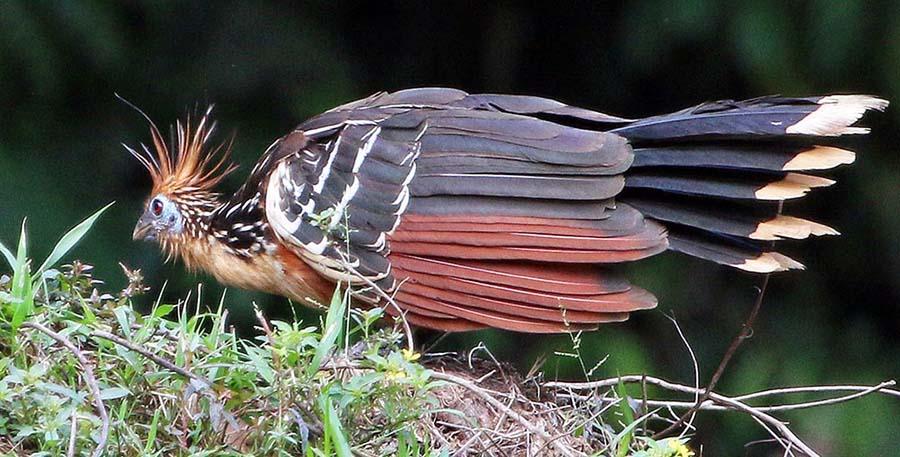 Yarina Lodge, Ecuador.
Yarina Lodge, Ecuador.Another one-species family that is endemic to the Neotropical freshwater wetlands is the 'Sunbittern' Eurypyga helias, of the family Eurypygidae. One of it's most striking features is when the wings are extended to reveal spectacular eyespots.
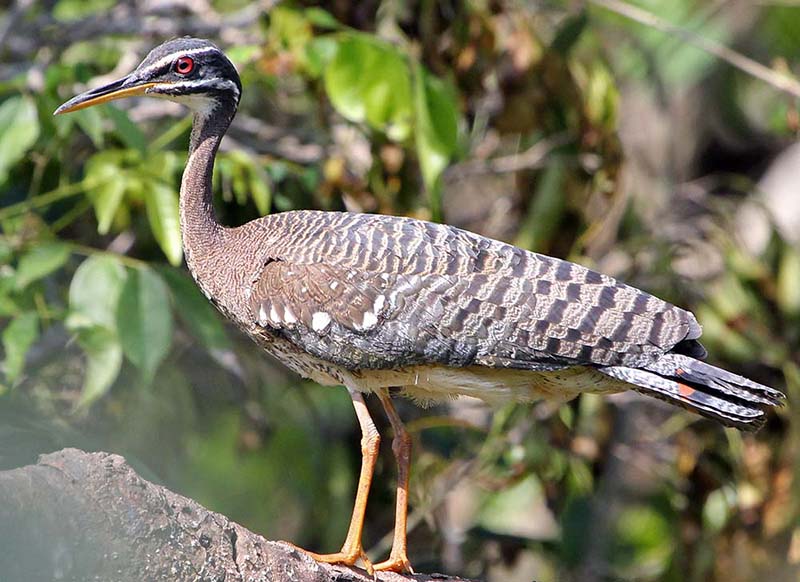 (Pousa Alegre, Brazil)
(Pousa Alegre, Brazil)The mammal that most symbolizes the Neotropical freshwater wetlands are the 'Capybara', Hydrochoerus hydrochaeris, 'Capivara' (in Brazil), Chigüire (in Colombia). They are the world's largest rodents.
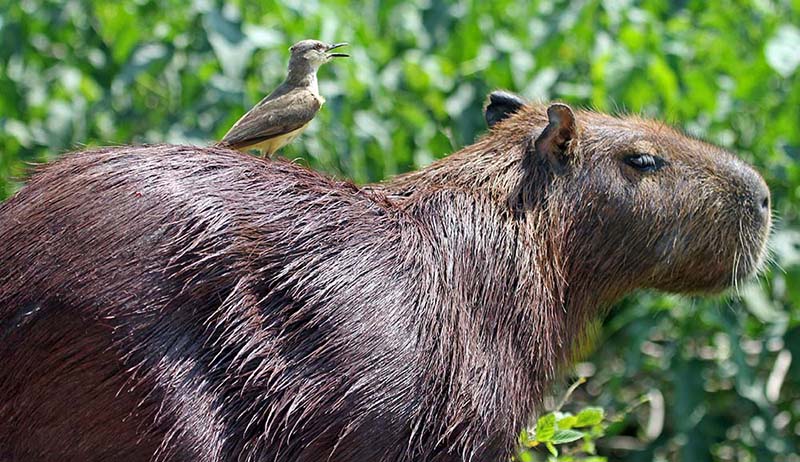
Places to experience the Neotropical freshwater wetlands
The largest freshwater wetland in the world is the Pantanal, mostly in Brazil. Places I have stayed there include: Hotel Pantanal Mato Grosso (lodge), and Pousa Alegre.



